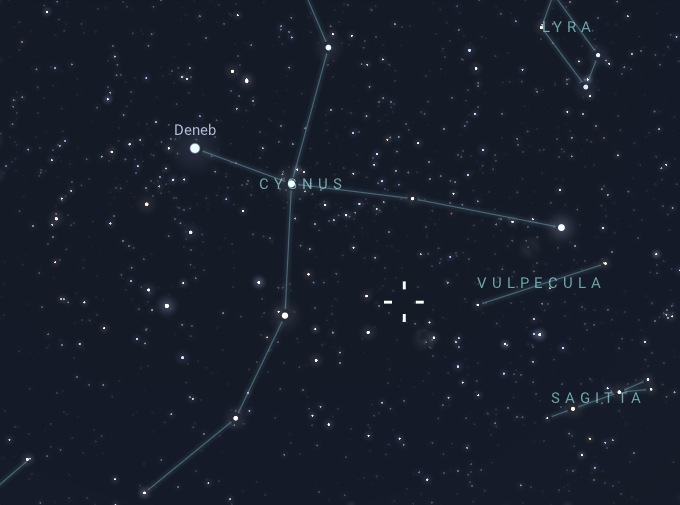NGC 6894 is a planetary nebula situated in the northern constellation of Cygnus, approximately 5,000 light-years from Earth. It was first observed by the German-British astronomer William Herschel on September 24, 1786. Below is an overview of this intriguing nebula:
Composition
NGC 6894, like other planetary nebulae, is primarily composed of gas, including hydrogen and helium, along with dust particles. The nebula’s vibrant colours result from the ionization and emission of gases energized by the central star. This core is a white dwarf—the hot, dense remnant of a once larger star that expelled its outer layers during the final stages of stellar evolution.
The nebula has a ring-like structure, a feature common among planetary nebulae due to the way the expelled material is shaped and illuminated over time. The white dwarf at the centre continues to emit ultraviolet radiation, causing the surrounding gases to glow in various hues—green from oxygen, red from hydrogen, and sometimes blue from helium. NGC 6894’s morphology suggests a slow, relatively symmetric ejection of material, possibly indicating a low-mass progenitor star.
Located in the Cygnus constellation, NGC 6894 is part of a rich region of the Milky Way, known for its dense star fields and interstellar clouds. Its distance of 5,000 light-years means the nebula’s light we observe today began its journey during humanity’s early civilizations. As the white dwarf gradually cools over time, the glowing shell of gas will dissipate into space, leaving behind only the fading core. This final phase is a glimpse of what could happen to our Sun in several billion years.
Observation
NGC 6894 has an apparent magnitude of around 11.6, meaning it is quite dim and not visible even in large binoculars. Observing it requires a moderate to large telescope (8 inches or more in aperture) to reveal its details, and even then, a very dark site is essential. Light pollution or a bright Moon can easily wash out faint objects like this nebula.
Under optimal conditions—dark skies with little atmospheric interference—NGC 6894’s faint, ring-like structure becomes more apparent through larger telescopes. Filters such as an O-III filter or narrowband filters can enhance the visibility of the nebula by isolating specific wavelengths of light emitted by ionized oxygen. However, even with such equipment, the nebula will appear as a faint greyish or greenish ring, as most planetary nebulae are too dim to show their vivid colours through amateur telescopes.. Its appearance may vary depending on observing conditions and equipment.
NGC 6894 can be observed from the northern hemisphere from June to October (between summer and autumn). During these months, Cygnus is higher in the sky and visible for longer periods during the night.




